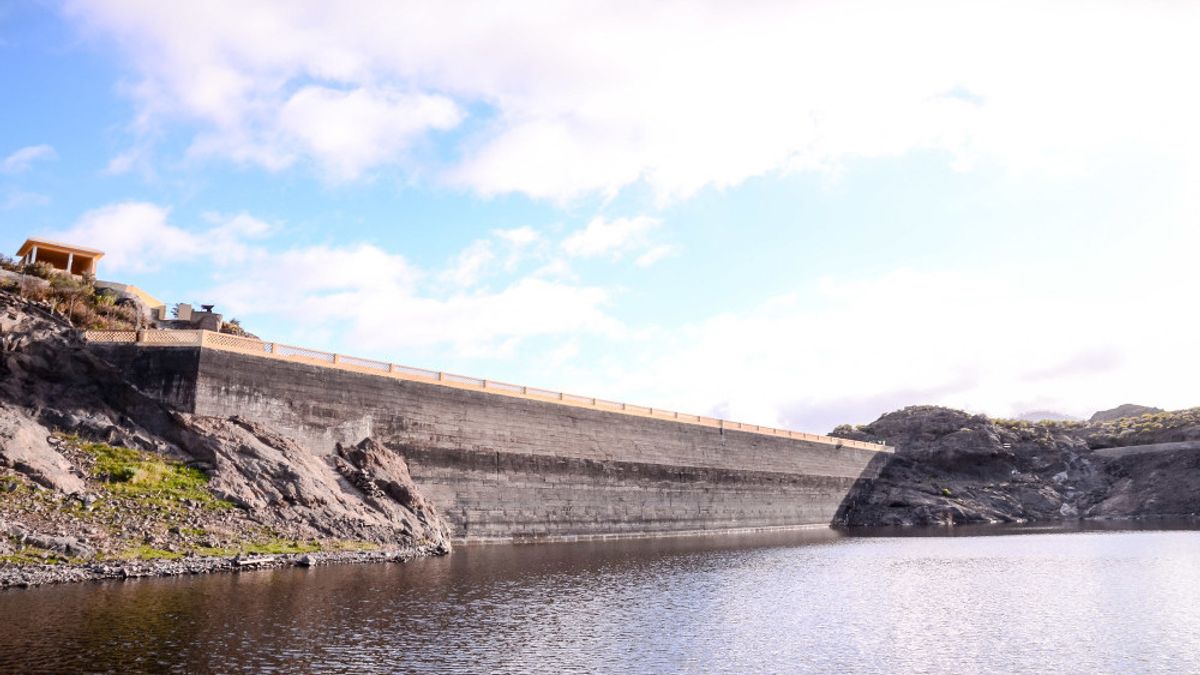YOGYAKARTA - A dry dam, also known as a dam shelter or dam shelter, is a type of water control infrastructure formed to accommodate water temporarily and release it slowly. Unlike conventional dams, which always hold water and form permanent reservoirs, dry dams can only hold water at high water discharge, such as floods or heavy rainfall.
After the water recedes, the dry dam will be empty again and ready to accommodate water when needed. This is a strategic role in water management to reduce the possibility of flooding and drought.
One of the main roles of dry dams is regulating excessive water flow due to high rainfall. In the rainy season or during large storms, the volume of water flowing into the river often increases extremely and causes flooding in the downstream area. Dry dams work by holding while the water flow is in dry reservoirs until the capacity of rivers or drainage channels downstream is good for channeling them. Water is then released gradually so that the risk of flooding in densely populated areas or agriculture can be minimized.
As an example, in an area with extreme seasonal rainfall, the construction of dry dams in the upstream part of the river can prevent the accumulation of water volume downstream of rivers that has the potential to cause flooding. Controlled and distributed water flows are also slowly helping maintain the stability of the area around the river.
Although dry dams do not play a role as permanent water reservoirs, they have a positive impact on water resource conservation. In some cases, water held back by dry dams can be used as reserves while in drought situations, or can be channeled to areas that need water. This is especially useful in areas with a long dry season. Although the water is not stored for a long period of time, good management allows water flow arrangements to maintain water availability during dry periods.
Not only regulating the volume of water, dry dams also help in protecting the quality of water. When flooding occurs, running water often brings mud, sediment, and pollutants from watersheds. By storing this water, dry dams allow heavy sediments to settle at the bottom of the reservoir, so that the water released downstream is relatively cleaner. This sedimentation process can reduce the amount of mud and pollutants carried into rivers and other waterways, so that the quality of the water downstream is always maintained.
Not only that, temporary water detention allows chemicals or pollutants to decompose first before the water is released. This result is very positive, especially in areas close to urban areas or industrial areas, where good water quality is very important for daily life and the health of residents.
Water management carried out by dry dams also has a significant impact on the sustainability of the local ecosystem. In the long term, dry dams can help avoid excessive erosion which is often caused by flooding. Uncontrolled floods can eat away at the soil along the river and cause land degradation, thus disrupting the natural habitat of local flora and fauna.
By regulating the flow of water, dry dams function to protect the soil and vegetation that develops around the river. Healthy water ecosystems also support biodiversity, both in water and on land. On the other hand, flood control also protects the agricultural zone and settlements from damage, thus supporting the sustainability of human activities around the river.
Dry dams offer economic benefits, especially in terms of maintenance and construction costs. Because dry dams do not require permanent reservoirs whose altitude must be maintained, costs for operations and maintenance are lower than conventional dams. This infrastructure is also easier to design to adjust to the geographical state and water needs of an area.
Not only that, by reducing the impact of flooding, dry dams also help reduce economic losses which are generally caused by damage to infrastructure, agricultural land, and property. In the long term, investment in the construction of dry dams can generate significant budget savings compared to repeated flood disasters.
SEE ALSO:
Along with the increase in climate change, both extreme rainfall and a longer drought pose a real threat to many regions. Dry dams are an adaptive solution to these challenges. With its ability to regulate flooding and provide water reserves during the dry season, this dam offers flexibility in water resource management, both in the short term and in the long term.
Dry dams can also be integrated with other area conservation programs, a kind of reforestation upstream of rivers and sustainable land management. Thus, dry dams not only play a role as physical infrastructure, but also as part of a holistic solution to face global environmental challenges.
In addition, said the Ministry of Energy and Mineral Resources: A Number of Dams Can Be Used for Hybrid Dam Programs.
So after knowing the function of dry dams, look at other interesting news on VOI.ID, it's time to revolutionize news!
The English, Chinese, Japanese, Arabic, and French versions are automatically generated by the AI. So there may still be inaccuracies in translating, please always see Indonesian as our main language. (system supported by DigitalSiber.id)


















